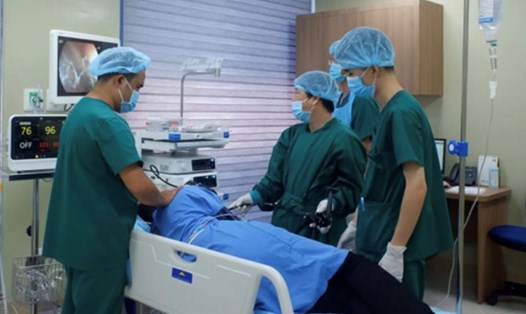The patient was thin and weak, only about 1.4 m tall and weighed 32 kg. In particular, she suffered from a curved spine with a curvature of about 60 degrees due to an old injury, seriously affecting her daily activities and activities.
After careful consultation, the doctors decided to perform endoscopic surgery to remove the cancer stomach. However, the surgery faces many major challenges.
According to Dr. Pham Van Hiep - Department of Gastrointestinal Purbolis, Military Central Hospital 108, due to small body and hunchback, when the patient lies down, the abdomen is almost pressed, making the space extremely limited, almost unable to put his hand into the surgery school.
In addition, the patient's stomach was deep behind the ribs, covered with the liver and colon, making access and surgery even more difficult. To handle this, doctors must carefully calculate the location of the trocar (port to bring endoscopic equipment into the abdomen), choose special points to be able to operate effectively in a narrow space.
"We had to place the trocar in unusual locations to perform a complete endoscopic surgery, completely cutting off the damaged stomach. The operating space is narrow, and the internal organs are obscured, causing the surgery time to last up to 4 hours, said Dr. Hiep.
3 days after surgery, the patient recovered well, could walk and eat normally. According to Dr. Hiep, this is one of the very few cases of stomach cancer in patients with severe spinal malformations that have been successfully operated on by endoscopy in Vietnam.
Digestive cancer, especially stomach cancer, is on the rise and becoming a global problem. In Vietnam, according to statistics from the World Cancer Organization (Globocan 2020), more than 17,000 new cases are recorded each year, the rate in men is higher than in women. The disease progresses silently, symptoms are easily confused with benign diseases, so it is often detected late.
Meanwhile, scoliosis is a fairly common condition in children, with an incidence of about 0.5-1%. About 80% of cases have unknown causes, the rest are due to infections, injuries, incorrect posture or birth defects of the vertebrae.









